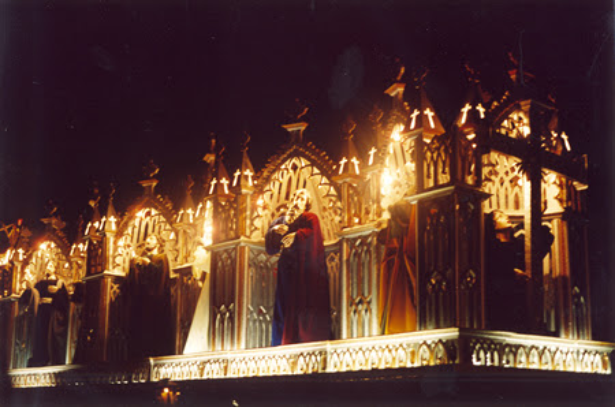Holy Week in Antigua - Slideshow
A slideshow of worship in Guatemala.

|
| Click to View Slideshow on Holy Week in Antigua |
The city of Antigua was declared a National Monument by the Guatemalan government in 1944, a Monument of the Americas by the General Assembly of the Pan American Institute of Geography and History in 1965, and named a UNESCO World Heritage Site in 1979. The Catholic observance and celebration of Semana Santa (Holy Week), an Andalusian flavored event introduced by Spanish missionaries from Seville, adds to the importance and fame of Antigua.
In Central America, Catholics display their passion and creativity best during the Semana Santa festivities as they commemorate the Passion and Crucifixion of Jesus Christ, culminating in jubilation on Easter. The entire city participates in the event, and hundreds of thousands of Guatemalans and visitors from all over the world flock to Antigua to witness the dramatic happenings.
The event begins on Palm Sunday, during which the venerated images of Jesus of Nazareth, the Holy Virgin of Sorrow, and other religious figures made during the Spanish rule and can date back to the 17th century, are mounted on large wooden structures carried from their churches through the city on the shoulders of Las Hermandades de Pasion: the Brotherhood and Sisterhood of the Passion. Similar processions also occur on Monday, Tuesday, Wednesday and Thursday, replicating the final days of Christ on earth.
On Good Friday the streets of Antigua are covered with beautiful natural and aromatic carpets made of colored sawdust, flowers, native plants, fruits and vegetables, which the residents put together in front of their homes for the processions to walk through. They are usually made during the 24 hours prior to the procession and the construction is timed so that the carpets are finished just before the carriers of the float arrive so that carpet looks its best. If more than one procession goes down a street a new carpet is made for each procession.
Processions generally begin with incense carriers and the Brotherhood's banner, followed by the carriers of the main float with the sculpture of Christ carrying his crucifix. A block behind the main float, the Sisterhood carry a smaller float with the figure of the Virgin Mary. Following behind is a funeral march band and two additional floats carrying the sculptures of San Juan and Maria Magdalena.
Carriers will carry the float for a block and then a new group will take their turn. Each turn is determined by the carriers' shoulder height to ensure that the float is balanced. This is very important as the floats can weigh as much as 7,000 pounds (3,150 kilograms). The Brotherhood carry lanterns while dressed in purple robes with white waistbands, while the Sisterhood wear white robes.
Later in the afternoon, Antigua becomes adorned with black crepe paper as thousands of people, burning incense and dressed in black, crowd the plazas and streets. A spectacular procession is led by the man bearing the crucifix, with hundreds of followers carrying black banners and standards engraved with the final words of Christ and the pronouncements of God. Life-like images representing the archangels, the Stations of the Cross, Calvary, the apostles and many others are part of the silent procession through the streets, where multitudes pray quietly. Both the Brotherhood and Sisterhood change into black robes to signify mourning. The image of Christ is replaced by another of Christ being laid to rest, which eventually comes to rest at a church for the night.
Holy Saturday continues with other funeral processions led by the image of a sorrowful Virgin Mary, followed by numerous women dressed in black who commemorate her moments of sorrow at the side of Christ.
Easter Sunday is a time of rejoicing, with early processions through the streets of a festive Antigua celebrating the Resurrection of Christ. Firecrackers are heard throughout the city, and masses are held in all the churches. The week-long ceremonies end that day, and residents return to their daily lives